NIL
Elite 2028 WR Brysen Wright inks first trading card NIL deal
Elite 2028 wide receiver recruit Brysen Wright has inked his first trading card NIL deal, On3 has learned. Represented by ESM, the 6-foot-3.5, 210-pound wide receiver has signed with Wild Card. Wild Card has released a box of college football trading cards previously, but Wright’s signing is the company’s first foray into the high school […]

Elite 2028 wide receiver recruit Brysen Wright has inked his first trading card NIL deal, On3 has learned. Represented by ESM, the 6-foot-3.5, 210-pound wide receiver has signed with Wild Card.
Wild Card has released a box of college football trading cards previously, but Wright’s signing is the company’s first foray into the high school space. Leaf Trading Cards and Topps have been aggressive in signing up top high school talent in recent years.
“This is Brysen’s first trading card partnership,” his agent, Dan Everett of ESM, told On3. “The five-figure deal pays the soon-to-be 10th grader a first-round NFL wide receiver rate per autograph.”
ESM currently represents a slew of college quarterbacks, including Georgia’s Gunner Stockton, Iowa State’s Rocco Becht, Ole Miss’ Austin Summons, Mississippi State’s Luke Kromenhoek, Tennessee’s Jake Merklinger and Miami’s Carson Beck.
Wright already holds scholarship offers from Florida, Florida State, Georgia, Ohio State, Oregon, LSU, Alabama, Miami and Texas, among others. He impressed in OT7 this spring and turned heads at the OT7 Playoffs last month. The 2028 prospect tallied seven total touchdowns over the OT7 Playoffs, including three in his final game of the tournament. He camped at Ohio State in June.
“He’s incredibly physically developed at this early stage and is a smooth mover at his size,” Rivals’ Director of Scouting and Rankings Charles Power recently said. “The Jacksonville native is the only 2028 prospect to hold an early four-star rating.”
The Jacksonville (Fla.) Mandarin star played alongside Jaime Ffrench in 2024. Wright hauled in 31 passes for 646 yards and scored eight touchdowns as a freshman, including a four-catch, 114-yard performance with two touchdowns.
“Brysen Wright may be the best amateur wide receiver in the country not named Jeremiah Smith,” Wild Card’s vice president of talent acquisition, Jay Claud, said in a statement. “And he is 14.”
NIL
Top Men’s CBB Freshman To Follow During 2025-26 Season
Source: Icon Sportswire / Getty Top Men’s CBB Freshman To Follow During 2025-26 Season The 2025-26 college basketball season is set to showcase an electrifying group of freshmen who are ready to make an immediate impact on the court. As programs across the country gear up for another thrilling year, these young stars are poised […]
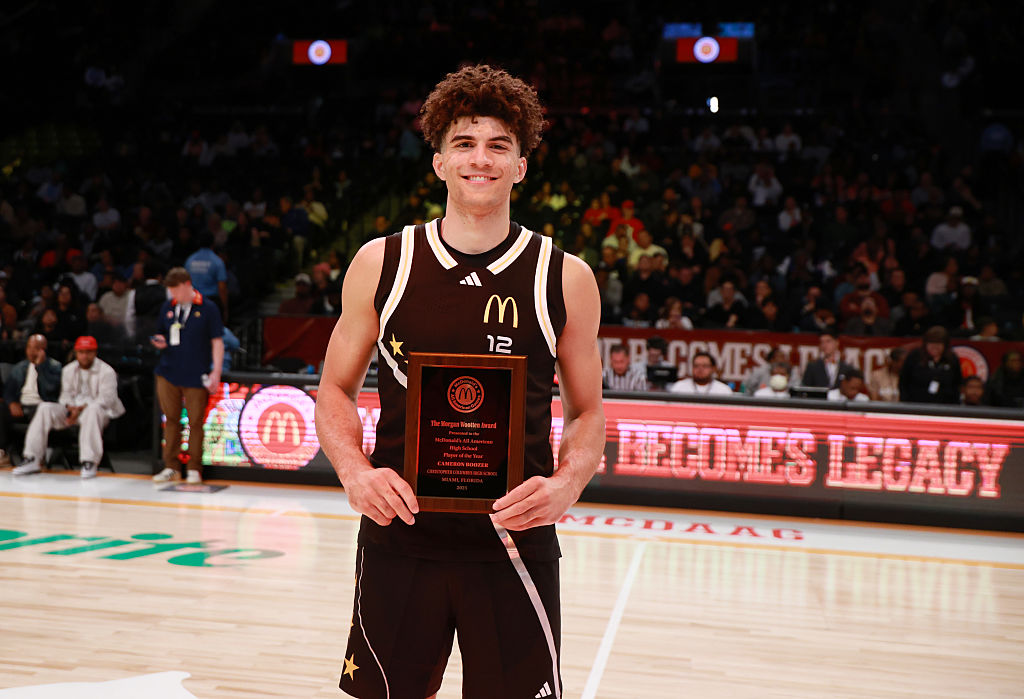
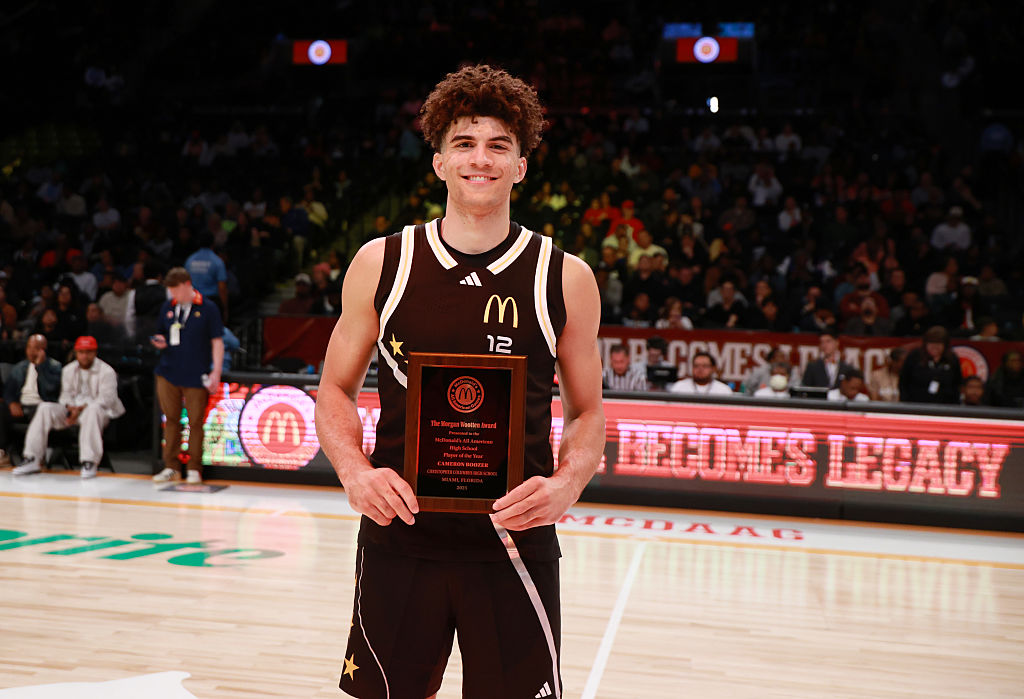
Source: Icon Sportswire / Getty
Top Men’s CBB Freshman To Follow During 2025-26 Season
The 2025-26 college basketball season is set to showcase an electrifying group of freshmen who are ready to make an immediate impact on the court.
As programs across the country gear up for another thrilling year, these young stars are poised to take center stage, bringing a mix of talent, athleticism, and potential that could shape the landscape of the season.
This year’s freshman class is loaded with players who have already made waves at the high school level, earning accolades for their scoring ability, defensive prowess, and leadership.
Many of these athletes are stepping into programs with rich basketball traditions, where they’ll be expected to contribute right away and help their teams contend for conference titles and deep NCAA Tournament runs.
From versatile forwards who can dominate in the paint to sharpshooting guards with ice in their veins, this group of freshmen is as diverse as it is talented.
Fans can expect highlight-reel plays, clutch performances, and breakout moments as these players adjust to the college game and showcase why they were so highly recruited.
As the season unfolds, these freshmen will not only be key contributors to their teams but also potential stars to watch for future NBA Drafts.
Their journeys will be closely followed by fans, scouts, and analysts alike, making the 2025-26 season one to remember.
Take a look below at the Top Men’s CBB Freshman To Follow During 2025-26 Season.
RELATED | Top 20 One-And Done College Basketball Seasons
RELATED | Top 100 Best College Basketball Players Since 2000
RELATED | Top 20 College Athletes With The Highest NIL Valuations
1. AJ Dybantsa – BYU

Source:Getty
A highly touted prospect known for his scoring ability, athleticism, and versatility on the court. Dybantsa is already making waves as one of the top young players in the country.
2. Darryn Peterson – Kansas

Source:Getty
A dynamic guard with a smooth shooting stroke and excellent playmaking skills. Peterson’s ability to create his own shot makes him a standout talent.
3. Cameron Boozer – Duke

Source:Getty
The son of former NBA player Carlos Boozer, Cameron is a dominant forward with a polished all-around game, excelling in scoring, rebounding, and defense.
4. Mikel Brown Jr. – Louisville

Source:Getty
A crafty guard with exceptional ball-handling and court vision. Brown Jr. is known for his ability to control the tempo and make plays for his teammates.
5. Nate Ament – Tennessee

Source:Getty
A versatile wing player with a strong defensive presence and a knack for hitting clutch shots. Ament’s high basketball IQ sets him apart.
6. Darius Acuff Jr. – Arkansas

Source:Getty
A scoring guard with explosive athleticism and a fearless approach to the game. Acuff Jr. thrives in high-pressure situations.
7. Caleb Wilson – North Carolina

Source:Getty
A skilled forward with a smooth mid-range game and the ability to stretch the floor. Wilson’s versatility makes him a valuable asset on both ends of the court.
8. Brayden Burries – Arizona

Source:Getty
A sharpshooting guard with a quick release and deep range. Burries is a constant threat from beyond the arc.
9. Koa Peat – Arizona

Source:Getty
A sharpshooting guard with a quick release and deep range. Burries is a constant threat from beyond the arc.
10. Braylon Mullins – UCONN

Source:Getty
A well-rounded guard with a high motor and a knack for making winning plays. Mullins’ hustle and determination are key to his success.
NIL
How Illinois State Men’s Basketball Bucked the Transfer Portal Trend
Chase Walker asked to meet with his coach at Illinois State, Ryan Pedon, in March. The Redbirds were about to start play in the CBI tournament, a reward for their first winning season since 2018–19. Walker requested that Pedon’s wife, Stephanie, be present, and Walker’s parents joined via Zoom. Pedon knew what this was about. […]
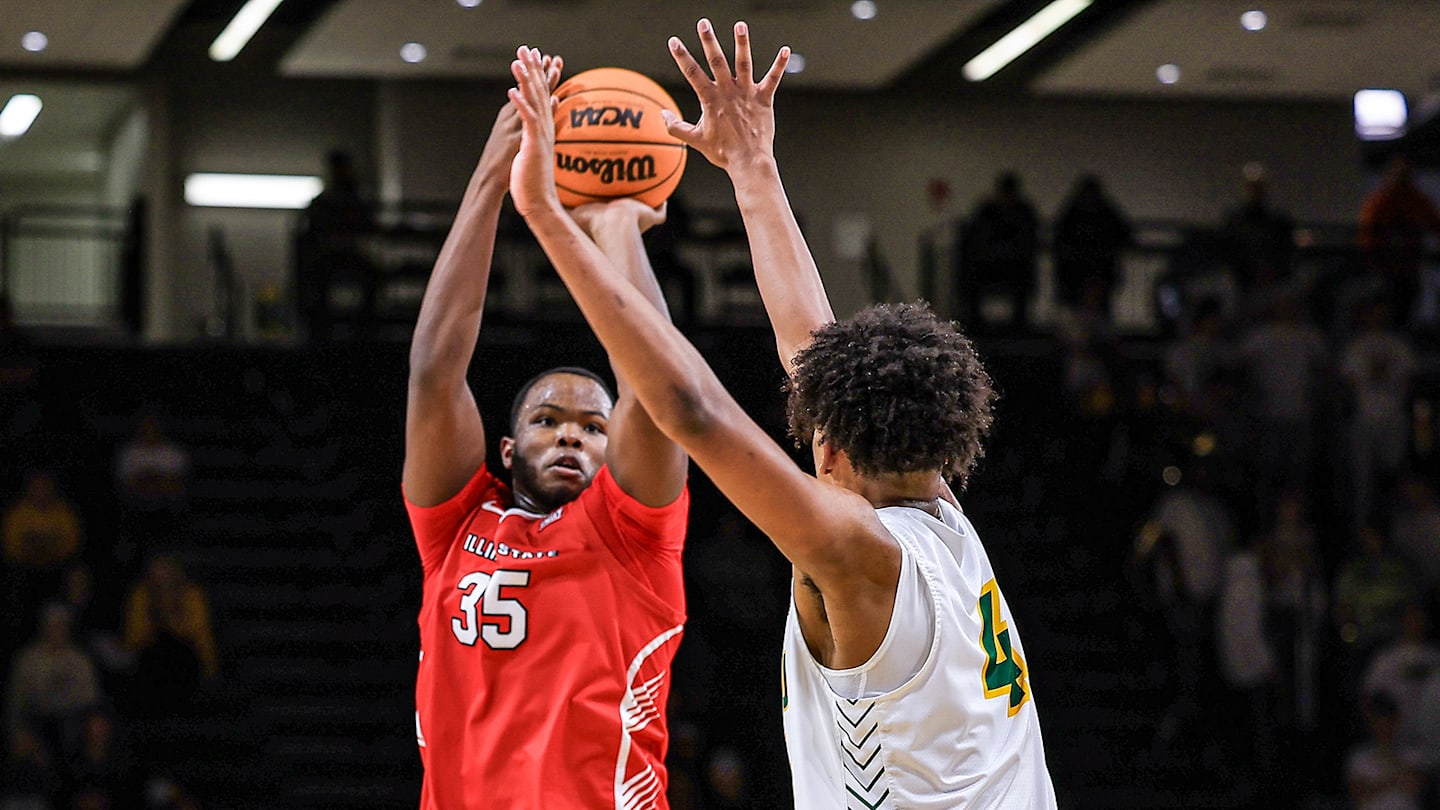
Chase Walker asked to meet with his coach at Illinois State, Ryan Pedon, in March. The Redbirds were about to start play in the CBI tournament, a reward for their first winning season since 2018–19. Walker requested that Pedon’s wife, Stephanie, be present, and Walker’s parents joined via Zoom.
Pedon knew what this was about. Walker, a first-team All-Missouri Valley Conference big man as a sophomore, was weighing transfer options. Power- conference schools had been trying to lure him away for months with offers of larger NIL compensation and greater exposure than he could get at a mid-major.
“As coaches, we’re all aware what is going on underneath the surface throughout the second half of the season—at least,” says Pedon. “There are players who already know what they’re going to make next year at their next school.”
In a reversal of the nomadic norm in college basketball’s free-transfer era, Walker called the meeting to tell everyone he was staying put. The gathering ended in tears of joy from Stephanie Pedon and Walker’s parents.
“People asked why I would stay,” Walker says. “I flipped it to, Why would I leave? We’re building something here. I don’t need all that money right now. Give me a basketball gym and a place to stay with a PlayStation, and it’s all good.”
That was just the beginning of Illinois State’s trend-busting spring, when a whopping seven of Walker’s teammates chose to stay with him. That included his two roommates, guard Johnny Kinziger and wing Ty Pence. The trio, who came in together in 2023, had all received transfer offers from higher-profile schools.
“We just sat down and were real with each other,” Kinziger says. “We’re all really happy where we are, and we want to be part of something special together.”
The 6′ 9″ Walker weighed nearly 400 pounds at one point in high school, his talent buried beneath excess weight. The top programs weren’t interested in him, and neither were most of those a rung below. While dropping pounds and remaking his body, Walker’s college choice came down to Toledo, Liberty and Illinois State. Pedon plotted a redshirt year to allow Walker more time to get in college basketball shape.
Injuries changed those plans 15 games into Walker’s freshman season in 2023–24. Playing at around 300 pounds, Walker flashed his potential, then kept slimming down to his playing weight of 270 for his sophomore season. He leveled up, averaging 15.2 points and 6.2 rebounds in just 24.3 minutes per game, then upped his scoring to 20 points per game in the Redbirds’ run to the CBI title.
“He is ridiculously strong,” Pedon says. “He’s a football helmet away from the NFL.”
Hence the high-major tampering. Power programs that had no interest in Walker two years earlier were now waving money in his face.
In the Valley, a proud conference that saw teams win games in nine of the last 13 NCAA tournaments, this has become a bitter rite of spring. High-major programs come poaching the league’s top players and coaches—sometimes as package deals. This year, Iowa hired Drake’s first-year coach Ben McCollum and got his star point guard, Bennett Stirtz, as well. Last year, Drake lost coach Darian DeVries and his standout son, Tucker, to West Virginia (and both now at Indiana). Indiana State’s 2024 team, an NIT finalist that won 32 games, lost coach Josh Schertz, guard Isaiah Swope and big man Robbie Avila to Saint Louis; guard Julian Larry and forward Jayson Kent to Texas; and guard Ryan Conwell to Xavier.
“We’re as vulnerable as any league in the country,” Pedon says.
The Valley named 16 players to its three all-conference teams this year, and five of the eight with remaining eligibility entered the transfer portal. The three who didn’t: Trey Campbell of Northern Iowa and two Redbirds, Walker and Kinziger.
Like Walker, Kinziger was overlooked in recruiting by the Midwest’s high-major schools. He chose Illinois State over Green Bay, moved into the starting lineup late in his freshman season and led the team in minutes played last year while averaging 14.6 points per game. Kinziger weighed transfer options with his family this spring, but he finalized his decision to stay put while playing a round of golf with Redbirds assistant coach Andrew Dakich. They drove from the course to Pedon’s house to give him the news.
“Johnny was the last one,” Walker says. “When I heard he was staying, I was smiling ear-to-ear for a week and a half.”
After surviving Portal Poaching Season, fully stocked Illinois State is setting its sights on a MVC title run and its first NCAA tournament bid since 1998. “They understand that there is value in legacy and their longevity at a place,” Pedon says. “Something that’s not talked about enough in this is what’s best for the kids in the long run. Where are they going to go to homecoming when they’re 40? What letter jacket are they going to wear? If you’re always moving around, where do you belong?”
NIL
Advisors Warn College Athletes
Last week, President Donald Trump signed an executive order targeting what the White House called the “chaotic environment” around lucrative financial deals available to some college athletes, particularly in high-revenue sports like football and basketball. The order would limit some “third-party, pay-to-play payments,” the kind of deals that resulted in what former Alabama coach Nick […]


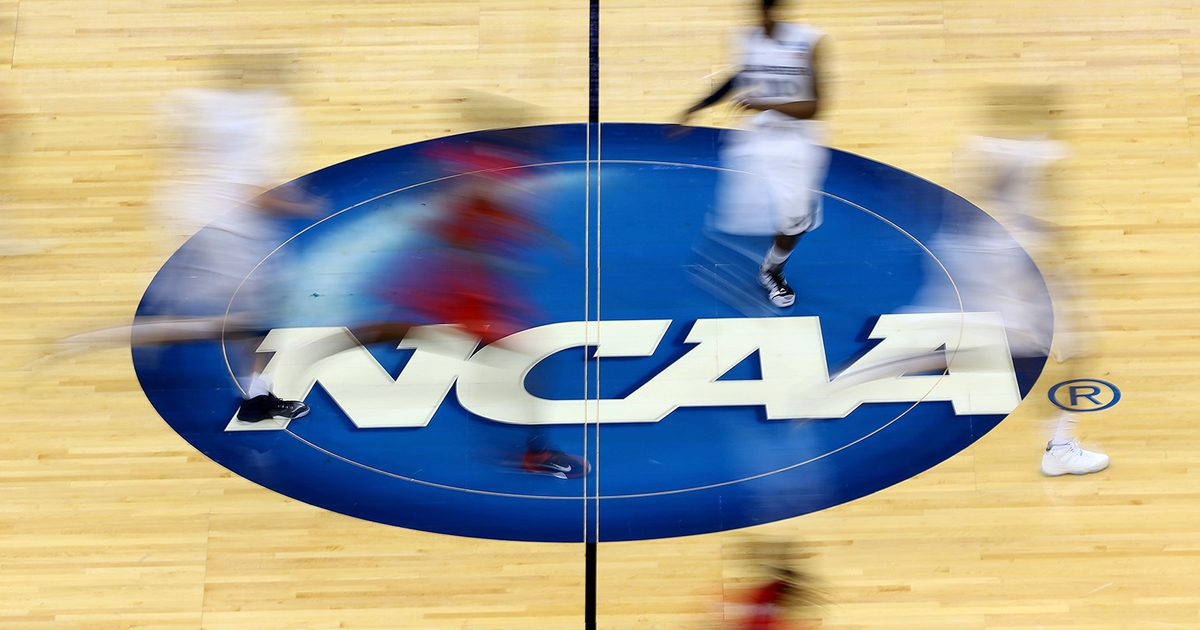
Last week, President Donald Trump signed an executive order targeting what the White House called the “chaotic environment” around lucrative financial deals available to some college athletes, particularly in high-revenue sports like football and basketball.
The order would limit some “third-party, pay-to-play payments,” the kind of deals that resulted in what former Alabama coach Nick Saban has called an “arms race” between colleges to woo top teenage prospects. The order does not limit the brand endorsements or licensing deals that can also come to these players.
The impact of the order remains to be seen. Still, it is the latest shift in an evolving landscape for student athletes navigating potentially lucrative financial benefits during their college careers.
An NCAA rule change in 2021 allowed college athletes to monetize their name, image and likeness (NIL) and profit from endorsements, subscriptions and licensing deals. Then, last month, a federal judge signed off on a $2.8 billion settlement of a lawsuit that, among other changes, allows schools to pay student athletes directly in addition to traditional tuition scholarships, including a share of revenue earned by the schools’ athletic departments (those changes went into effect July 1).
Given how much money some power conferences make off their sports programs, many argue it’s only fair to let the athletes themselves benefit financially. For example, a December 2024 CNBC analysis of major universities found Ohio State University’s athletic department led the way with a $1.32 billion valuation and $280 million in revenue.
According to William Carter, a top NIL consultant and professor at the University of Vermont’s Grossman School of Business, 20% of Division I athletes have signed NIL deals, out of an estimated 190,000 student-athletes. And according to the On3 NIL Valuation, an index projecting the annual value for college and high school athletes, at least 50 (and likely more) athletes are running profits (including NIL earnings) above $1.5 million.
Of course, for every Arch Manning, DJ Lagway and Carson Beck making millions of dollars, thousands more D-I athletes across all sports are getting paid much lower figures, with some in less-popular sports like fencing, rowing and bowling making $1,000 or less, The New York Times has reported.
Yet financial advisors (including some former pro athletes) warn that many young athletes and their families are ill-prepared for the potential windfall and susceptible to the bad financial advice, shady business offers and sometimes outright financial fraud that often chases new money.
Consider recent cases in the professional leagues. Baseball star Shohei Ohtani relied on his long-time interpreter and practice partner to handle some financial affairs, only to see him fraudulently tap the player’s bank accounts to pay off gambling debts. NBA player Dwight Howard was lured into a bogus investment opportunity to buy a women’s NBA team, losing millions.
Yet most professional leagues or player organizations have protective measures to help pros manage their money, including financial management classes, education programs and even vetted lists of financial advisors.
College athletes are far less prepared, says Jon Hayes, a managing director and senior wealth advisor with MAI Capital Management, a Cleveland-based financial advisory firm with a long track record of working with professional athletes.
“They haven’t finished college yet. They haven’t sat in union seminars that talk about red flags to look out for and things to be aware of,” Hayes said. “They haven’t been in a pro locker room to have that veteran player say to them, ‘Hey, there’s this local guy that’s going to be waiting after every game and he’s going to try to get close to you and sell you on something.’”
Hayes and other advisors worry that the combination of big money and young, often financially unsophisticated athletes, little institutional oversight and colleges wary of liability risk has created an environment that could cost aspiring pro players millions.
Some advisors even avoid working with these student athletes altogether. They are frustrated by navigating inexperienced clients through the dangers brewing in the space, says Mitch Smith, the president of life, high-net-worth, and executive benefits with EPIC Insurance Brokers & Consultants.
“It’s tough for them and for the professionals. It’s a beat-you-up kind of industry,” Smith said.
Fraud Follows New Money
Though top college athletes have long been popular, before 2021, there were strict NCAA guidelines on the players’ ability to monetize their NIL in endorsement deals or testimonials.
The NCAA considered changes after several states enacted their own NIL rules. In June 2021, the Supreme Court ruled in NCAA v. Alston that the NCAA’s financial restrictions on student-athletes’ “education-related benefits” violated antitrust law.
The following month, the NCAA suspended its ban on NIL deals. Whereas once athletes could only receive scholarships, housing and an education in return for their skills, now they can sign sponsorships and rake in funds raised by boosters. NIL tech company Opendorse projected the total NIL market to grow to $1.67 billion in 2024-2025 (from $917 million in 2021-2022).
But scams, fraud and bad advice often follow new money, and lawsuits are usually close behind.
Last month, Sports Illustrated reported that a lawsuit brought by former college quarterback Jaden Rashada against Florida Gators Head Coach Billy Napier, former staffer Marcus Castro-Walker, and wealthy Florida booster Hugh Hathcock could proceed.
According to Rashada, the defendants misled him with a promised $13.85 million NIL deal that led him to choose Florida instead of a less lucrative recruiting deal with the University of Miami Hurricanes. The multi-million dollar deal never came to pass, but Rashada had already dropped his Miami commitment.
Last year, Front Office Sports reported that several football players at the University of Tulsa accused the school’s coaches of promising their families tens of thousands of dollars in NIL payments, but they never received anything.
An NIL company co-founded by former NBA Star Kendrick Perkins was accused of preying on young athletes by offering upfront cash in exchange for portions of their future NIL deals, an agreement experts said was akin to a high-interest loan, according to an ESPN investigation.
The NIL opportunities (and risks) extend to the high school level, as football player T.A. Cunningham can attest. According to NBC News, Cunningham’s family moved to California and enrolled him in a high school there with the promise of a big payday when he entered college. But the NIL deals never came, and Cunningham wound up benched on his high school team.
A Need for Advice
Often, college athletes are the first in their family to accrue money so quickly and lack trusted advisors to steer them through the decision-making minefields. Smith said he has seen college athletes presented with phony endorsement deals or saddled with fraudulent contracts that are difficult to break.
Jerry Sneed, a senior vice president and senior private wealth advisor with Procyon Partners, said the NIL reforms opened avenues for advisors to find potential clients. Some college football players make more as college athletes than they will as NFL rookies.
Sneed is a registered advisor with the NFL Players’ Association, the labor union representing the league’s athletes. He said college athletes are “overly protected” in college and have the desire to “be a brand, in a sense,” and that can make them vulnerable to too-good-to-be-true financial proposals.
“It’d be perfect if they just stayed on campus, and anytime someone reached out to them, they went to their advisor. But these guys are all social media people,” he said. “You think it’s a good deal because you don’t know any better. That’s all it takes to lose a hundred grand or a million bucks.”
Most advisors say that professional sports leagues and players’ unions are more adept at educating young pro players about financial management and the risk of fraud (though as the Ohtani and Howard examples show, even the most celebrated players can become victims).
College athletes don’t have a union, and both their schools and the NCAA seem hesitant to take on that kind of responsibility because they fear liability exposure, according to Smith.
“Everyone’s afraid to jump in, but I feel like the liability of not doing it is way worse,” he said.
Hayes recalled speaking with a university provost about whether NIL athletes were prepared for the financial complications and potential fraud that follow their deals. The provost agreed more could be done, but questioned why the school would single out athletes for those initiatives when pre-med and pre-law students were also following potentially lucrative career paths.
That reasoning made no sense to Hayes. “The average career span in the NFL is three-and-a-half years,” he said. “The doctor or lawyer may go out and invest in something stupid and lose their money at age 28, but can work for another 30 or 40 years and recover. The pro athlete can’t.”
Smith said some schools will commit to a single financial training session for athletes, while others will try to align themselves with particular advisors, which gets “messy.” Smith said the NCAA needs to adopt some standardization around protecting the athletes’ financial interests through establishing a players’ union or group.
“These schools and the NCAA make a lot of money for them. To take a few percent across the board, to fund a program like that, and get a group of really good advisors” would benefit the players and the schools, he said.
According to Hayes, colleges have historically protected their athletes to the point of being “resistant” to running financial seminars or education forums for their college players, opting to shelter their athletes and keep fraudsters away.
“And the unfortunate consequence is by doing that, you’re not educating them,” he said. “You’re exposing them.”
Payments Beyond NIL Deals
Last August, the NCAA and a company called Teamworks launched NIL Assist, which helps student athletes weigh their NIL options. According to an NCAA spokesperson, the platform stems from transparency and disclosure rules the administration’s Division I Council approved last year to offer students more information about “the overall NIL landscape and trends in NIL agreements.”
In addition to a service provider registry and some educational materials, the platform includes a public-facing database with anonymized “NIL disclosure data” where college athletes can rate their experiences with registered individuals or services.
Further complicating issues, NCAA members approved changes to their rules to align with an agreement to settle an ongoing lawsuit arguing college athletes from before the 2021 changes are owed some compensation, according to Front Office Sports. Plaintiffs in the suit argued that broadcast revenue earned by the NCAA should be considered NIL revenue and shared with the athletes.
Former student athletes Grant House and Sedona Prince originally filed the suit in 2020, seeking damages and an injunction to stop the NCAA from enforcing anticompetitive restraints that stopped student players from getting NIL payments, according to a notice from the law firm Ropes & Gray. The suit became a class action in 2023.
The judge ordered the NCAA to pay almost $28 billion in damages over the next decade to former college athletes who played from 2016 up until the 2021 NIL changes, according to ESPN.
The settlement deal also means schools can pay their athletes directly, compensation above and beyond what they may earn from NIL deals. Schools start with a $20.5 million cap, which will increase yearly for the coming decade, not including scholarships.
The changes also try to limit college sports boosters—often alumni with both school pride and deep pockets—from paying favored athletes “de facto salaries” by funneling NIL money through third-party deals, ESPN reported.
Winston Justice, the CEO of $7 billion SageSpring Private Wealth and a nine-year NFL offensive lineman, said college players may be less susceptible to fraud than professionals. He said professionals are more emboldened to aggressively chase lucrative deals than students, who are more cautious.
Schools could also mandate that college athletes attend classes on financial management or avail themselves of other educational resources. “Whereas in the pro leagues, I guess you can, but not really,” he said. “It’s kind of up to them if they go to the NFLPA trainings or if they go take advantage of the educational assistance.”
Justice’s leading fear for NIL athletes isn’t fraud but taxes. He said that too many are not allocating money for future tax liabilities that could hit after they leave the programs. Sooner or later, he says, NIL money will stop.
“Then you can make the NFL or NBA, and those funds could pay for the taxes, but what if you don’t make it?” he asked. “Or what if you go to Canada and they don’t pay you as much?”
What Comes Next?
The Wall Street Journal first reported that Trump was moved to sign an executive order related to college sports after a conversation with former Alabama football coach Nick Saban in early May. Saban was allegedly concerned about schools entering a financial “arms race” to lure athletes, and the damage it would cause college sports programs.
In a fact sheet detailing last week’s order, the White House claimed the Supreme Court ruling helped create a situation “that threatens the financial and structural viability of college athletics,” including lawsuits seeking to “tear down” the differences between college and pro sports.
According to the White House, the situation has turned what was “supposed to be legitimate, third-party NIL opportunities for players into pay-for-play bidding wars amongst university boosters,” with single teams spending as much as $40 million in one year.
“This dynamic also reduces competition and parity by creating an oligarchy of teams that can buy the best players—including the best players from less-wealthy programs at the end of each season, given the lack of restrictions on transferring teams each year,” the fact sheet read. “Without federal action to restore order, ongoing lawsuits and a patchwork of state NIL laws risk exploiting student-athletes and eroding the opportunities provided by collegiate sports.”
The order is vague on enforcement details; in it, Trump asks the Labor Secretary and National Labor Relations Board to “clarify” student-athletes’ status to “preserve non-revenue sports,” and directs the Attorney General and Federal Trade Commission to “take appropriate actions” to protect their rights and protect college athletics “from endless, debilitating antitrust and other legal actions.”
Regardless of how the order plays out in colleges and courtrooms in the months and years to come, the need for sound financial advice has only intensified for these young student-athletes, says Shawn Wooden, a financial advisor with Associated Financial Consultants and Investor Services and a former safety for the Miami Dolphins and Chicago Bears. After all, the schemes don’t change, even if the potential victims do, he said.
“It’s just using different keywords. It’s still the same,” Wooden said. “Fraud is still the same. A Ponzi scheme is a Ponzi scheme.”
NIL
Southern University to get school-branded snacks, drinks in new NIL initiative
BATON ROUGE, La. (Louisiana First) — A new partnership between a private label snack company and the Southwestern Athletic Conference aims to generate revenue for NIL initiatives for each of the 12 colleges and universities. Advertisement “We’re extremely excited to partner with Victory Snacks to further enhance our member institutions’ ability to generate funding for […]


BATON ROUGE, La. (Louisiana First) — A new partnership between a private label snack company and the Southwestern Athletic Conference aims to generate revenue for NIL initiatives for each of the 12 colleges and universities.
Advertisement
“We’re extremely excited to partner with Victory Snacks to further enhance our member institutions’ ability to generate funding for their respective NIL programs,” SWAC Conference Commissioner Dr. Charles McClelland said. Victory Snacks offers jerky, nuts, corn puffs, trail mix, drinks and more.
Southern University sports fans and students can expect to see the new school-branded snacks near them. According to a SWAC release, the snacks could be sold at local stores, on-campus stores, quick-serve restaurants and athletic venues.
‘He’s as advertised’: Former LSU running back practices with Southern football team
Latest News
Advertisement
Copyright 2025 Nexstar Media, Inc. All rights reserved. This material may not be published, broadcast, rewritten, or redistributed.
For the latest news, weather, sports, and streaming video, head to Louisiana First News.
NIL
Natick sports news: Unified Track & Field team headed to Fenway; Basketball player Mela signs NIL deal with restaurant
The latest Natick, Mass., sports news: Unified Track & Field team headed to Fenway Three-Peat Division 1 Unified Track and Field State Championship athletes on Monday Aug. 4 with be honored with other title winners before the Red Sox-Royals at Fenway Park. Tickets are available until Aug. 1 for those who would like to sit […]

The latest Natick, Mass., sports news:
Unified Track & Field team headed to Fenway
Three-Peat Division 1 Unified Track and Field State Championship athletes on Monday Aug. 4 with be honored with other title winners before the Red Sox-Royals at Fenway Park.


Former NHS basketball player Ryan Mela signs NIL deal with restaurant
Former Natick High School basketball player Ryan Mela, now heading into his sophomore year at Providence College, has signed a NIL (name, image, and likeness) deal with 110 Grill, which has locations nearby Natick as well as in Providence. NIL deals allow college athletes to earn money from endorsements. Mela had a strong freshman year for the Friars basketball team, earning Big East All-Freshman Team honors.
110 Grill’s parent company has been doing deals for several years now with athletes from numerous schools, including Syracuse and Siena, and says you don’t have to be a big national brand to get in on this action as a local business. The deal with Mela was done through the Friar Family Collective and is the first for him that does not include teammates.

 Ryan Mela
Ryan MelaFeel free to send us photos and info on Natick sports: natickreport@gmail.com
NIL
Coaches race to master art of retention amid NIL, revenue sharing and transfer portal challenges
Whether it was an ACC, SEC, Big Ten or Big 12 coach taking the podium at media days, one theme remained consistent: In an era where revenue sharing and NIL opportunities can swiftly steer athletes toward the transfer portal, programs across the country are racing to master the art of player retention. Its importance is […]

Whether it was an ACC, SEC, Big Ten or Big 12 coach taking the podium at media days, one theme remained consistent: In an era where revenue sharing and NIL opportunities can swiftly steer athletes toward the transfer portal, programs across the country are racing to master the art of player retention.
Its importance is clear to Arkansas coach Sam Pittman, who has seen all but five players from his 2023 recruiting class leave for different programs.
“Here’s what it’s not because of: the way they’re treated, because of the way they’re developed, because of the way they’re taught,” he said. “That’s not the reason. It could be playing time. It could be finances. Probably the majority of it is finances, but you’d have to ask those guys.”
More than 3,000 Bowl Subdivision players reportedly entered the transfer portal this past spring, which would average out to about 22 players per team. For the Razorbacks, 10 starters will be back and one of them is senior defensive lineman Cam Ball. He has remained with Arkansas his entire career, a somewhat rare occurrence for an NFL hopeful these days.
“I’m just a loyal guy. I’m loyal to the state of Arkansas; Arkansas has been loyal to me,” Ball said.
Arkansas, like many schools, is also trying to scare up more money from donors as it faces the financial ramifications of the $2.8 billion House settlement; last fall, the athletic director said the school needed some $12 million more annually to “be in the NIL game from a football perspective.” Besides the money, the Razorbacks have to find talented players; Ball grew up in Atlanta, just barely within the regional footprint in which Pittman prefers to recruit.
“We have to go outside our state,” Pittman said. “In-state recruiting has changed over the last three or four years because of NIL. So you have to think about the talent — who it is versus what pay is expected. So that’s been a little bit more difficult in our state.”
Pittman isn’t the only coach who wants prospects to be familiar with what their college experience will look like before making any life-changing decisions. Florida coach Billy Napier paints a clear picture of life in Gainesville and the challenges and perks that come with it.
“We present our product in a way where we’re selling the degree, the alumni network, the Gator-made program, and you have to be up for the challenge of trying to get Florida back to where it’s been before,” he said. “And I think that’s one of the reasons we’ve been able to keep it together.”
Florida’s 2023 recruiting class remains mostly intact, and from Napier’s perspective, hungrier than ever. Compared to other SEC teams, the Gators have had more success with retention. Napier doesn’t think it’s a coincidence.
“We told them when they came in, you know, look, it’s not going to be all sunshine and rainbows here. We’re in this thing for the long haul,” Napier said. “I think a lot of this is how you pitch it in recruiting. We’re going to continue to do that, and retention is more important than it’s ever been.”
Coaches scrambling to prevent transfers and maintain consistency isn’t exclusive to the SEC. The approval of the House settlement is a double-edged sword when it comes to retention, and Power Four schools and beyond are feeling the effects. Third-party NIL deals are no longer the only negotiation tactic schools need to worry about.
Complex contracts are becoming common and legal risks grow for athletes and programs alike as college football increasingly resembles the pros. Some deals are being negotiated solely by athletes as young as 18.
As a redshirt senior, Louisville linebacker TJ Quinn is used to the process.
“I wouldn’t say I was nervous (to negotiate) because this is my third year of having to do that,” Quinn said. “You’ve got to kind of stand your ground with what you feel like is your worth. If you’re comfortable with their offer, then sign. Then you have some guys that’ll leave and go to schools to get more money and stuff. That was never really like a big pusher for me, to go out and get more money because I feel like I’m in a good situation here at Louisville.”
Quinn’s loyalty could be the most convincing negotiation tactic of them all. While programs use revenue-share dollars to sway prospective transfers, coaches have begun to reward loyalty.
“To some degree, it’s capitalism that you get what you earn. So the guys that go out and play well are going to get more than the guys who haven’t proven it yet,” SMU coach Rhett Lashlee said. “Everybody on the team’s not going to make the same. Fair doesn’t always mean equal.”
But he also said the Mustangs are not going to add players “making a whole lot more than those guys who have already earned it here.”
“And I think that’s what helps us keep a good culture, is try to start with: Let’s retain first, and then whatever’s left, let’s go build the best team we can for those guys,” Lashlee said.
North Carolina State’s Dave Doeren doubled down.
“A guy that’s been on a team three years, that’s playing well and earned it on the field should make more than a guy coming in the door. I think that’s a proper way to do business,” Doeren said, though he warned that might not be the case across the board. “Right now, common sense is not prevailing in college football.”
___
AP Sports Writer Aaron Beard contributed to this report.
___
AP college football: https://apnews.com/hub/college-football
Copyright 2025 The Associated Press. All rights reserved. This material may not be published, broadcast, rewritten or redistributed without permission.
-

 Fashion2 weeks ago
Fashion2 weeks agoEA Sports College Football 26 review – They got us in the first half, not gonna lie
-

 Health2 weeks ago
Health2 weeks agoCAREGD Trademark Hits the Streets for Mental Health Month
-
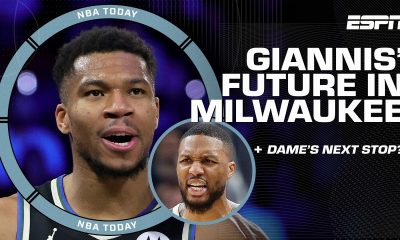
 Youtube3 weeks ago
Youtube3 weeks agoWill Giannis DEPART Milwaukee⁉️ + How signing Turner & waiving Dame impacts the Bucks | NBA Today
-

 Sports2 weeks ago
Sports2 weeks agoVolleyball Releases 2025 Schedule – Niagara University Athletics
-

 Sports2 weeks ago
Sports2 weeks agoNew NCAA historical database provides wealth of information on championships
-

 Sports2 weeks ago
Sports2 weeks agoAdapti, Inc. (OTC
-

 College Sports3 weeks ago
College Sports3 weeks agoBuford DB Tyriq Green Commits to Georgia
-

 High School Sports5 days ago
High School Sports5 days ago100 days to men's college basketball
-

 Youtube3 weeks ago
Youtube3 weeks agoThe Twins squeeze out a walk-off win 👀
-

 Rec Sports2 weeks ago
Rec Sports2 weeks agoFlorida woman, 20, accused of pepper-spraying rich men in Miami Beach hotels, stealing their luxury watches




























